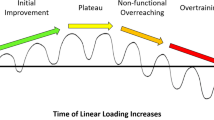Abstract
The primary objective of this work was to investigate dynamic psychophysical (acceptable) material handling strengths (capabilities) of an older population (aged 55–74 years; n = 20). The findings are presented in two parts. Part I deals with manual lifting capabilities; Part II deals with manual carrying capabilities. In order to determine dynamic psychophysical strengths, routine everyday tasks were simulated in the laboratory. Lifting activities simulating work-related tasks included eight sequences of lifting (two lifting heights × four lifting frequencies); for each sequence, the maximum acceptable weight of lift (MAWL) was determined. Psychophysical lifting strengths of a younger population (18–35 years; n = 20) were also determined to find how the MAWL of the older population differed from that of the younger population. In addition to the MAWL, a number of responses at the MAWL were recorded: heart rate (HR), oxygen uptake (VO2), and category-ratio ratings of perceived exertion (CRRPE). The results indicated no practically significant age-related differences in responses between either the older and younger males, or older and younger females. Based on the limited data collected in this study, it appears that age has no significant influence on people's capability to lift loads. Consequences of these findings on design are discussed.
Similar content being viewed by others
REFERENCES
Larsson L, Karlsson J. Isometric and dynamic endurance as a function of age and skeletal muscle characteristics. Acta Physiol Scand 1978; 104: 129–136.
Astrand PO, Rodhal K. Textbook of work physiology (3rd Ed.). New York: McGraw-Hill, 1986.
Baker, S, Harvey A. Fall injuries in the elderly. Clin Geriat Med 1985; 1: 501.
Whipple R, Wolfson L, Amerman P. The relationship of knee and ankle weakness to falls in nursing home residents: an isokinetic study. J Am Geriat 1987; 35: 13–20.
Bassey E, Bendall M, Pearson M. Muscle strength in the triceps surae and objectivity measured customary walking activity in men and women over 65 years of age. Clin Sci 1988; 74: 85–89.
Wickman C, Cooper C, Margetts B, Barker D. Activity, housing and the risks of fall in elderly people. Age Ageing 1989; 18: 47–51.
Buchner D, Koepsell T, Abrass I. Leg muscle strength and hip fracture risk. Gerontologist 1990; 30: 77–78B.
Mital A. Issues and concerns in accommodating the elderly in the workplace. J Occup Rehab 1994; 4: 253–268.
Fillenbaum G. Screening the elderly: A brief instrumental activities of daily living measure. J. Am. Geriat. Soc. 1985; 33: 698–706.
Lawton M. The impact of the environment on aging behavior. In: Birren J, Schaie KW, eds. Handbook of Psychology of Aging. New York: Van Nostrand Reinhold, 1977.
Faletti M. Human factors research and functional environments for the aged. In: Altman I, Lawton MP, Wohlwill JF, eds. Elderly People and the Environment. New York: Plenum, 1984.
Davies C, White M, Young K. Electrically evoked and voluntary maximal isometric tension in relation to dynamic muscle performance in elderly male subjects aged 69 years. Eur J Appl Physiol 1983; 51: 37–43.
Mital A. Maximum weight of lift acceptable to male and female industrial workers for extended workshifts. Ergonomics 1984; 27: 1115–1126.
Snook SH, Ciriello VM. The design of material handling tasks: revised tables of maximum acceptable weights and forces. Ergonomics 1991; 34: 1197–1213.
Wright U, Mital A. Is there a need for psychophysical strength studies of the aged? J Occup Rehab 1997; 7: 53–60.
Borg G. An introduction to Borg's RPE-Scale. Ithaca, NY: Movement Publications, 1985.
Mital A, Nicholson AS, Ayoub MM. A guide to manual materials handling. London, UK: Taylor & Francis, Ltd., 1997.
Roebuck J. Anthropometric methods: Designing to fit the human body. Santa Monica, CA: Human Factors and Ergonomics Society, 1995.
Ayoub MM, Mital A. Manual materials handling. London, UK: Taylor & Francis, Ltd., 1989.
Founooni-Faard H. A Psychophysical Study of High and Very High Frequency Manual Materials Handling. PhD dissertation, University of Cincinnati, Cincinnati, Ohio, 1992.
Snook SH. The design of material handling tasks. Ergonomics 1978; 12: 963–985.
Mital A. Comprehensive maximum weights of lift for regular 8-hour work shifts. Ergonomics 1984; 27: 1127–1138.
Author information
Authors and Affiliations
Rights and permissions
About this article
Cite this article
Wright, U.R., Mital, A. Maximum Weights of Handling Acceptable to People Aged 55–74 Years: Part I. Lifting. J Occup Rehabil 9, 3–13 (1999). https://doi.org/10.1023/A:1021385230426
Issue Date:
DOI: https://doi.org/10.1023/A:1021385230426




